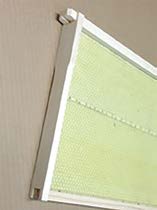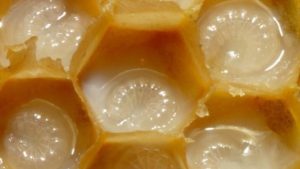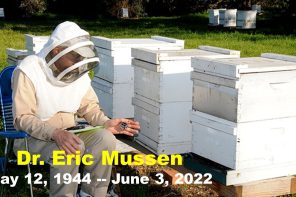By: Ed Simon
Making a side bar for a frame can be challenging. But it doesn’t need to be. I needed to build frames for a custom designed hive body (Modified Dadant hive body). This MD hive body had a height of 11¼” which required custom built frame side bars.
After watching multiple YouTube® demos, I combined two methods and rearranged some of the steps. The result was a method of creating side bars of any length desired that required only one unique jig to be made.
Note: “How to Make Beehive Frame Side Bars” from “Path of the Bees” was the primary reference I used. Thank you, Charlie! Reference: The two YouTube® videos I liked best were: How to Make Beehive Frame Side Bars Path of the Bees – Charlie https://youtu.be/YaF2G4lrafc This video uses a planer, jointer and table saw to accomplish the task. Rodger’s Shop – Bee to Z https://youtu.be/Ccop0TEfqw4 This video uses only a table saw to accomplish the task.
Parts – Frame bar side
2” x 6” x ??’ – with minimal knots and imperfections
Note: The width of the lumber is based on the width of a jointer available to you.
Note: Each “clear” section of your lumber will yield one side bar for each ½” of the width.
A 6’ board with no knots will give you 144 side bars with a length of 10¾”.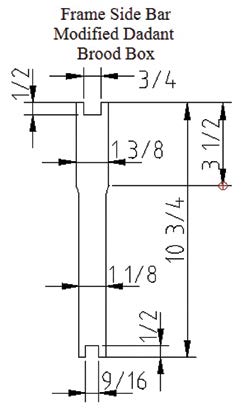
Construction
Please read the complete set of instructions and resolve any questions before starting the construction.
The following steps will make a side bar that is 10¾” long. This is the length of a side bar that is needed for a Modified Dadant hive of 11¼” height. The 11¼” height is based on the currently available 1” x 12” lumber in home improvement or lumber stores.
Note: A jointer and a planer were available for developing this article. Depending on the equipment available to you, you will have to modify steps to use the tools you have.
Note: If you need to calculate the length of a side bar for your specific hive body use the following information.
The total side bar length is ½” less than the height of the hive body. This length in conjunction with the standard ⅝” deep frame rest provides for the correct bee space above the top bar and beneath the bottom bar.
Note: The top portion of the side bar is 1⅜” wide and extends 3½” from the top of the bar where it then tapers to a 1⅛” width. The 3½” distance from the top of the bar is constant regardless of the length of the bar.
Note: This article assumes you will be using commercially available top and bottom bars for your frame.
Note: After setting up for a cut and cutting a test piece, use a commercially available side bar from the same manufacturer supplying your top and bottom bars, to double check your cut for correct saw settings.
Step 1: Check the measurements for the top and bottom notches.
Measure the top and bottom bars where the side bars join them. This is extremely important if you are making your own top and bottom bars. A ¾” x ½” deep notch for the top bar and a 9/16” x ½” notch for the bottom bar will be used for this article. If your measurements are different you will need to adjust the provided measurements.
Note: All manufacturer’s bar dimensions and even within a single manufacturer may vary slightly. I measured twelve top and bottom bars from the same manufacturer, and they varied in two of the dimensions. Choose a snug fit for whichever dimensions you use.
Step 2: Select the lumber.
Side bars are under significant stress when removing and handling the frames. Since you are going to invest time in making the side bars, select lumber that is knot free or lumber that has sections that are knot free for a minimum of the length of the side bars plus a couple inches.
Note: Knots and other imperfections can we worked around. After you slice the wood into the final side bar, reject the “bad” bars and use them for fireplace kindling.
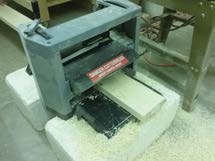
Step 3: Size the lumber and square the edges.
Using a planer and a jointer smooth and square the lumber to a 1⅜” thickness.
Note: Depending on the lumber you choose the edges may be already squared.
Note: If you do not have a planer for sizing the lumber, use “Rodger’s Shop – Bee to Z” video as a primary reference.
Step 4: Trim the lumber to length.
Cut knot free sections of the lumber into blocks that are the length of your side bar (10¾” for this example).
Note: Depending on the size and location of the imperfections in the block, they can be worked around when slicing the block into its final thickness.
Note: Save the correctly sized (1⅜” wide) but unusable blocks of wood to be used for testing during the saw setup.
Checkpoint
You should now have multiple blocks of wood that are 1⅜” thick by 10¾” long. They need to be the exact length of your side bar. All the ends and edges should be square.
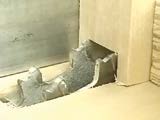
Cutting Notches
Step 5: Build a Frame Side Bar Notching Jig.
Reference: See “Build a Frame Side Bar Notching Jig”, to create a jig/pusher for your saw. This jig (pusher) will hold a 1⅜” side bar block in the correct position for cutting the top and bottom notches.
Step 6: Cut the top bar notch (¾” x ½”).
Using the jig, cut the top bar notch in the block end.
Note: As a sanity check before making any cuts, check that the jig is positioned snugly against the fence and the center of the dado blade is centered on the jig reference line.
Note: Before making subsequent cuts, verify the cut by comparing it to a commercial side bar or a previously cut and saved block or side bar.
Note: Multiple cutting passes may be necessary to achieve a consistent cut depth. A wide dado blade tends to raise the material during the cutting operation.
Step 7: Cut the bottom bar notch (9/16” x ½”).
Setup the saw for the bottom notch and cut a test notch and verify the setup. Then cut the bottom bar notches.
Step 8: Cut the ⅛” recessed sides (side bar bee space).
This step creates the unique profile needed by each side bar. By cutting the recessed sides with a jointer before you slice the block into individual side bars, you save a significant amount of time.
Attach a stop block on your jointer’s fence at the finished end of wood so the jointer removes all but 3½” from the top edge of the block. The depth of the jointer cut should be ⅛”. After cutting the first side, turn the block over and cut a matching recess on the opposite side.
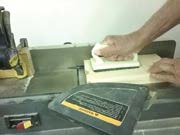
Using Jointer
Note: The 3½” full width top of each side bar is the same regardless of the length of the side bar.
Note: If you do not have a jointer, review the video (Rodger’s Shop – Bee to Z) for making a table saw jig that will perform the same function for a single side bar.
Warning: Be very careful. A jointer can be a dangerous tool if used incorrectly.
Step 9: Slice the blocks into ⅜” thick side bars.
Set your saw depth correctly with a ⅜” distance to the fence. Then slice individual side bars from the block.
Warning: Be careful and use pusher sticks.
Side bars are not difficult to make if you pay attention to details and measure correctly.
Suggestion: Make extra side bars. The setup for making any item takes time. Cutting extra items while the saw is setup is an inexpensive investment in material.
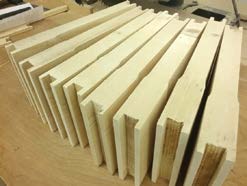
Finished Blocks
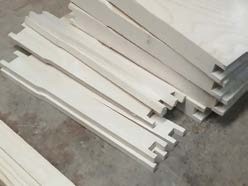
Stack of finished side bars
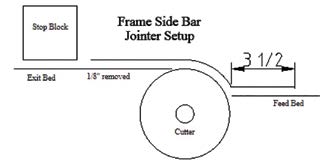
Frame Sidebar Jointer Setup
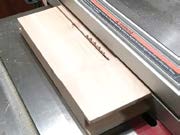
Slicing Sidebar
Build a Frame Side Bar Notching Jig
When using a saw to cut wood that extends above the saw fence the wood tends to drift from 100% contact with the fence. The result is an uneven cut. The Frame Side Bar Notching Jig will help correct this situation. If the notches are cut before the bee space on the sides of the side bar are cut, one jig will work for both the top and the bottom bar notches.
The difference between cutting the top and bottom notches is the width of the dado blade and the position of the saw’s fence.
Parts
¾” x 10” x 10” – 2 pieces
Construction
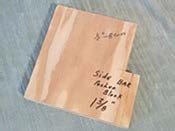
Finished Notching Jig
Step 1: Cut the part listed in the part list. Use the attached drawings to cut the jig.
Step 2: Glue the base pieces together.
Align the base pieces and glue them together.
Note: A 1½” thick jig is needed to keep the wood positioned against the fence correctly.
Step 3: Mark the center of the jig’s cutout for blade alignment.
Note: This mark is used to align the blade center to the jig and position the saw’s fence for both the top and the bottom notches.
Creation of the jig is now complete. This is the simplest jig I have ever made.
Usage
Place the correct dado blade on the saw. Then align the jig’s centering alignment mark with the center of the dado blade. Snug the fence against the jig while keeping the centering mark aligned. Set the blade height to the correct height and test the cut.
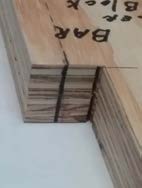
Blade Centering Line
Step 1: Install a dado blade (¾” – top).
Step 2: Calibrate the depth for the notch.
Using junk wood, adjust the dado blade to the ½” height. Keep adjusting the blade until the correct depth is achieved.
Hint: After setting the correct blade height, lower it to its lowest position while counting the revolutions of the height adjusting knob. Record the number of turns needed to achieve the ½” depth on the top of the jig. This information will help you replicate the notching with minimum of fine tuning.
Step 3: Align the blade on the centering line.
Set the blade to the correct height and using the saw’s fence, align the center line of the jig with the center of the dado blade. Then using a test piece of wood cut a notch to ensure everything is aligned correctly. Match the cut with a commercial side bar to double check the cut. Fine tune the positioning until you are satisfied.
Step 4: Cut the notch in one end of all the blocks of wood.
Note: Multiple cutting passes may be necessary to achieve a consistent cut depth. A wide dado blade tends to raise the material during the cutting operation.
Step 5: Change the blade to the other dimension (9/16” – bottom).
The top and bottom notch widths are not the same, therefore, the saw’s fence needs to be repositioned to keep the top and bottom notch centers aligned.
Use the previous steps to position the fence and the blade height for this width of dado blade.
Step 6: Test the notch alignment.
Double check the notch alignment, the centers of the notches should be aligned.
You can now cut top and bottom notches for your side bars with consistency.
Setting up for making a side bar takes time but once the saw is setup many can be made in a very short time.
Hint: Cut extra side bars once you are setup and checked out. The setup time far outweighs the cost of additional wood when all you need is an additional two side bars.
Build a Uniquely Sized Plastic Foundation
When you build a non-standard Langstroth hive body and you create non-standard frames, you are simply OUT-OF-LUCK finding commercially available foundation. This was our problem when we wanted to use plastic Rite-Cell® foundation by Mann Lake for the modified Dadant (19” x 19⅞” x 11¼”) hive body that we were developing. This extra deep hive body used standard 1” x 12” board available at lumber yards or home improvement stores. After creating 10¾” frame sidebars to match the hive body, we needed to modify the plastic foundation to meet the extra height of these frames. Luckily, the length matched the standard foundation length. Two foundations (a medium 6⅝” and a shallow 4¾”) needed to be joined to achieve the height needed (9⅞”). After joining the foundation, we will then cut it to the correct height.
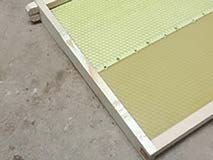
Finished frame with foundation
Design notes: The melting/piercing method of attaching two sheets of plastic foundation was selected after four different attempts. Eventually a $6.00 pencil point soldering iron solved the problem. The following methods were tried and rejected:
Drilling holes and wiring was extremely time consuming, and the joints were still weak.
Stapled joints – I was unable to find a sharp staple that could consistently penetrate the two layered plastic foundation.
Super glue (gel form) required fast assembly and the removal of the beeswax coating.
Acetone for melting the plastic was dangerous and required fast assembly and the removal of the beeswax coating.
Construction
Step 1: Calculate the foundation size.
Use an assembled frame and measure the distance between the bottom of the top bar the top of the bottom bar. Then add ⅜” to this measurement. This is the total height of the foundation needed for this frame.
Note: Make one prototype foundation to verify your measurements before committing to production.
Step 2: Make compatible joints.
Overlap the bottom of one sheet of foundation with the top of a second. Then use a pencil point soldering iron to pierce the joint every two inches. Turn the combined sheets over and perform the same piercing/melting between the previous welds. The result is a slightly thicker foundation for the ⅜” where the overlap occurs.
Hint: Use a wood strip to mark the piercing positions and help keep the soldering point aligned when joining the sheets of foundation.
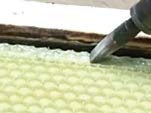
Melting bottom edge
Step 3: Cut the previous joined sheets of foundation to size.
Use a saw to cut the bottom section of foundation to size (9⅞” for this example).
Warning: Wear safety glasses when cutting plastic with a circular saw. Flying pieces of plastic are dangerous.
Hint: Cutting waxed foundation will leave bees wax on the saw’s table. Use a heat gun and paper towel to remove the wax.
Step 4: Melt the bottom edge to fit the bottom bar groove.
To allow the bottom edge of the foundation to slip into the bottom bar groove, you need to remove the raised cell design. Use a flat soldering iron to melt these cell impressions along the bottom of the foundation.
Hint: Position a piece of wood against the edge to be melted. Then use the wood as a guide for melting the bottom (or top) edge.
Simple to make, a non-standard height plastic foundation is possible.
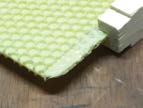
Cell impression free bottom






